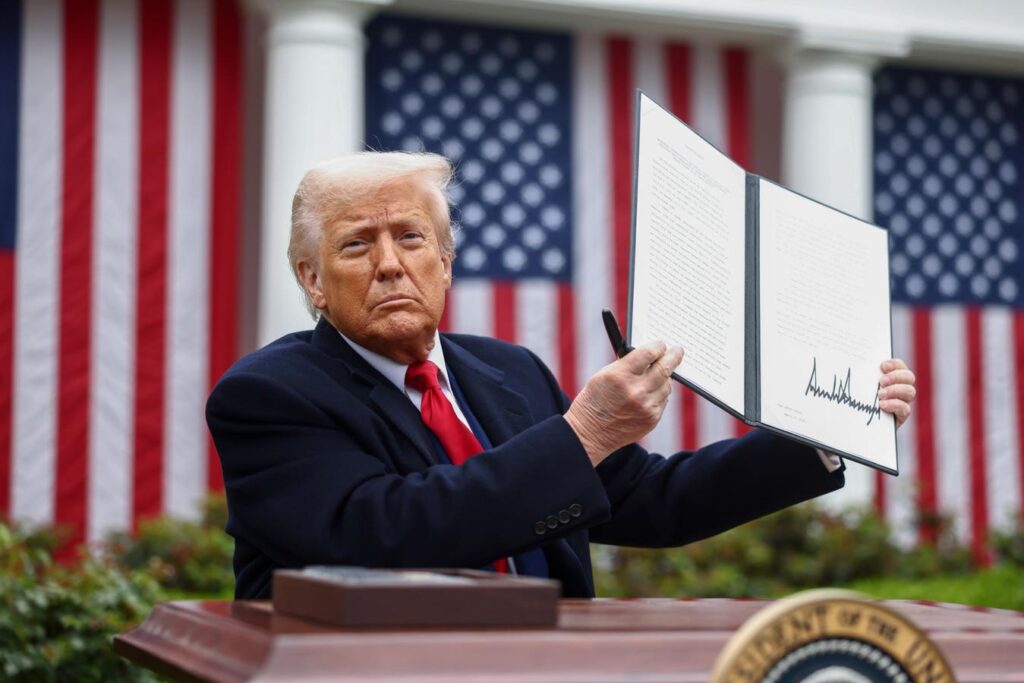To get a small business loan, borrowers typically answer questions about their cash flow, assets, business plans, and credit histories. But there’s now a new question lenders are asking, one most business owners probably aren’t ready to answer.
Lenders want to know how President Trump’s unpredictable, heavy-handed tariff strategy might impact a borrower’s business, according to Bob Coleman, publisher of the Coleman Report, a trade publication for small business bankers and lenders.
Coleman brought attention to the issue Wednesday on X, formerly known as Twitter. He shared a conversation with a chief credit officer who told Coleman that he’s instructing underwriters to consider how tariffs will affect a borrower’s future cash flow. The officer didn’t specify exactly how that analysis would work, only that he wanted borrowers to share their perception of how it might.
On Wednesday, President Trump announced sweeping new tariffs, including a 10% baseline levy on all imports and significantly higher rates on specific partners—34% on China and 20% on the EU. The announcement triggered immediate market mayhem: S&P 500 futures dropped 3%. The dollar weakened against major currencies, and Treasury yields fell to six-month lows as investors sought safe-haven assets.
Since taking office again in January, Trump’s tariff plans have shifted constantly. In February, he threatened a 25% tariff on imports from Canada and Mexico, then walked it back. Tariffs on Chinese goods started at 10%, jumped higher in March, and now sit at 54% after the so-called “Liberation Day” announcement on April 2nd. But details are vague, and it’s not clear if this is the final plan or just another negotiating tactic.
That unpredictability makes the new lending question particularly challenging. Small business owners can’t predict future White House trade policy, yet lenders expect answers anyway.
Ray Drew, managing director at Winston-Salem-based Truliant Federal Credit Union and host of The Art of SBA Lending podcast, says tariffs are already squeezing small businesses. He says that while some companies may benefit long-term if manufacturing returns to the U.S., but in the short term, many will struggle. That’s because small businesses can’t fully pass increased costs onto consumers, especially those with limited inventory flexibility.
It’s not a small problem, despite how Small Business Administration Administrator Kelly Loeffler wants to spin it. In March, Loeffler tweeted the results of RedBallooon and PublicSquare’s Freedom Economy Index, which showed that just 17% of small businesses were worried about tariffs. But as Drew points out 17% of five million businesses isn’t anything to sniff at.
“That’s a lot of businesses, and a lot of jobs that will be impacted in the short term from these tariffs,” says Drew. “We are already seeing it in our portfolios, and therefore we need to be asking borrowers about this.”
MORE FROM FORBES
Read the full article here

